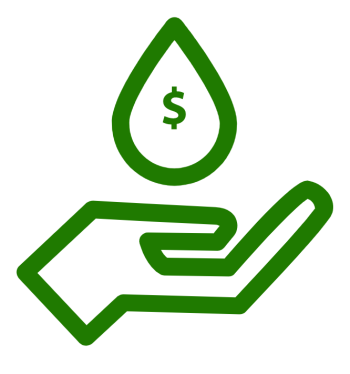At the start of the pandemic, there was uncertainty about how water and wastewater utilities’ revenues and finances might be affected. Many utilities and local governments were concerned with loss of revenue from the commercial sector, as well as the financial implications of statewide moratoria on late fees and disconnections for non-payments designed to ensure that everyone has adequate access to water and sanitation during a designated public health emergency. Various polls and case studies were analyzed to gauge early and ongoing effects on the utilities’ financial condition. Now, the release of audited data in local governments’ annual financial statements provides additional information and insights. This blog post summarizes how over 300 local government water and wastewater utilities in North Carolina fared at the end of Fiscal Year 2020 (end of June 2020 for all local governments in the state) compared to previous years. The audited data include the first three months of the pandemic.
Tag: pandemic
On October 5th, two House Democrats, Harley Rouda and Rashida Tlaib, submitted this letter to ask the director of the CDC to give a nation-wide moratorium on water disconnections due to non-payment through the state of emergency because of COVID-19. While this is at the federal scale, many individual utilities and states already declared moratoria in 2020, though some of those have expired by now (mid-October). Utilities and state and local government officials recognize the value of access to clean and safe water during the pandemic, and utilities are motivated to avoid disconnections for public health and customer service reasons, as well as to minimize the cost of operations associated with disconnections and reconnections. Still, disconnecting a customer from water service is seen as an important tool for revenue collection in the water/wastewater industry. According to data from 84 North Carolina water and wastewater utilities provided to the North Carolina Utilities Commission, an average of 13.7% of a utility’s customers were past due on their bill in June of 2019 (pre-COVID). Providing notice of disconnection or disconnection itself can be effective for encouraging payment of these late bills, but how effective they are is unclear.

COVID-19 and North Carolina Utilities: Impact Assessment of the Coronavirus Pandemic on North Carolina Water and Wastewater Utilities
August has been a key transition month for local government utilities in North Carolina as EO 124/142 (which prohibited disconnections due to non-payment for residential utility accounts) has expired, payment plans are required to be in place, and Governor Cooper just announced $175 million in relief money, including $122 million for assistance in paying rent and utility bills.
How are water and wastewater utilities across the state faring under COVID-19 conditions? We’ve been keeping track here at the EFC and though the circumstances are constantly changing, we’ve been able to assess some of the impacts of COVID-19 on utilities during the last five months.
We have just released a report funded by Division of Water Infrastructure in the Department of Environmental Quality, outlining results from a poll, analysis of the EO 124/142 data that utilities reported to the North Carolina Utilities Commission (NCUC) for the full April through July period that covered the statewide moratorium, stories of individual utilities (blog post coming soon), and an overview of our financial resiliency tool. Continue reading
With the ongoing COVID-19 pandemic, utilities across the nation continue to adapt to rapidly changing conditions through a number of measures, from suspending water shut-offs to implementing cost-saving maneuvers like reducing energy costs.
To better understand some of the financial implications of the pandemic, the Environmental Finance Center surveyed 93 water and wastewater utilities in North Carolina in early May on a range of topics, including payment plans for delinquent customers, how long they can pay all operating and capital expenses, changes in total revenue collected, staffing for utility operations, plans for the next fiscal year’s rates, and the scope, funding, or timing of capital infrastructure projects for the year.
Four key insights from the survey are detailed below. Each finding is coupled with graphs showing the response distribution for the survey question connected to the key finding. Continue reading





